Wild horses in Mongolia
Wild horses. Listen to the sound of the word. Wild, as in free.
Every human has a relationship with horses. If you never met one in real life, you have seen them on TV, read about them in books, met them in commercials. Beautiful, proud, free horses. We, who have met them in real life, almost always get forever spellbound by them. Because the horse is a strong archetype, a primordial image, means something to us. Some kind of a horse is there, somewhere deep inside of all of us. Most deeply the horse lives, ingrained, in the soul of the Mongol. The horse is by far the most important animal in Mongolia. And they have many horses, the Mongols. About 4 million domesticated horses. And then the Mongols themselves are not more than 3 million, in Mongolia.
I and my son Ivar, who is with me on this journey to Mongolia, have put on all the wool cloths we have brought. After a sudden weather change, it is now -10 degree Celsius and everything is covered in snow. It is our sixth day in Hustai National Park and our guides, the biologists and researchers, Naraa and Uugnaa, drive us around in the park to find the wild horses (the name of the wild horse in Mongolian is Takhi). The sky is intensely blue and the sun is reflecting in the snow, making the ground sparkling white. All of a sudden the sky is full of birds of prey. It is a mighty sight. We count to 48 vultures and a couple of eagles. To get closer to the birds we step out of the car and we then spot the dead Red Dear in a gully. - A pack of wolfs have been here for breakfast, says Uugnaa. It explains the gathering of the birds of prey. - One time I saw 78 Black Vultures eating a wild horse. I ask Uugnaa how many wild horses the wolfs kill. - They can not kill healthy adult horses, he explains to me, the horses have strong teeth and hoofs. But they kill almost half of the foals every year, and they kill sick and old horses. But it is as it should be, Uugnaa says, the wolfs are important to us here in Hustai, they kill foals and dears, but foremost, they keep the number of rodents in the park on a good level.
Mongolia is a vast country. Someone called it the last real wilderness on earth. Mongolia is as big as Germany and France together and is situated in the middle of Central Asia, between Russia and China. It is the largest landlocked country in the world, not bordering to any sea, and also one of the countries located at the highest altitude, with an average elevation above sea level at 1.600 meters. Eastern and central Mongolia is to a large extent constituted of steppes. In southern Mongolia, the Gobi desert spreads out and in western Mongolia, the Altaic mountains run into Kazakhstan. In western Mongolia the temperature can drop below -50 degree Celsius in the winter time and in the Gobi desert it often rises above +40 degree Celsius in the summer. The wast lands of Mongolia seem infinite and are almost totally without roads. In the countryside, there are very few road signs to tell you where you are, no fences to keep animals in or to surrounding property. Wherever you look you see untouched land. Sometimes there is a hint of white out there in the green serenity – then you have spotted a nomadic family with their yurts. A lot of things in the Mongolian countryside looks like it did in Genghis Khans day's, even if you also find modern things like motorbikes and satellite discs.
We leave the vultures and drive on. A little bit later we see a group of Takhis at a distance. We grab our binoculars and Uugnaa tells us what we see; - it is Saikhanaas group, it is a good group, let us head over to them. I and Ivar get our cameras, binoculars, tripods, and backpacks out of the car, then we begin to walk up the slope. The snow is creaking under our feet. We are at an altitude of 1.800 above sea level and the wind is rather strong, so you feel the cold in your cheeks and nose. Today we get really close to the horses. Uugnaa tells us that the way the different stallions reacts to humans varies a lot. - This stallion is very secure, he says. Saikhanaa is 13 years old and in his prime years. Younger stallions, who recently has taken over a band, or more nervous stallions are not that comfortable with humans. - Especially not when we have loud tourists here, or people who attempt to run up to the horses rather than look at them through binoculars, he adds. We count to 10 horses. Uugnaa asks me, - do you see the mare to the right? She is the lead mare. Do you see that she has a rather sturdy and big body? They often have that, the ones that become lead mares. She is around 12-13 years old now. The age also plays a role. Older mares have more experience, of course. Do you see that she stands together with 3 younger horses? They are her offspring. Usually, they form this smaller family groups within the band, he continues. And they always recognize their own offspring, both mares, and stallions. A stallion would never mate with his own daughter. While I and Uugnaa are talking, Ivar is setting up the tripod with the camera. Ivar is 13 years old and has gotten time off from school, just to come here with me and study the wild horses. He is a big help to me and today we got a lot of good pictures and films.
When we get into the car again we talk about the structures in the bands. Uugnaa tells us that the stallion's role is to defend his group, mostly from other stallions, but also against predators. - When a pack of wolfs get close to the horses and the band has young foals, the mares position themselves in a ring around the foals, while the stallion tries to chase the wolfs away.
In a country so vast and sparsely populated as Mongolia, the horse has always played a very important role. Without horses, Genghis Khan had never succeeded with his conquests. Today nomads also use motorbikes and cars, but the horse still has a very high status. In deep snow and rugged terrain, to ride is a much more reliable way to safely make your way. There is only one kind of domesticated horse breed in Mongolia and it is simply called The Mongolian Horse. It is small, sturdy and strong, a horse that in many ways resembles The Icelandic Horse. The horses are multi-purpose, you ride them, milk them, eat them, uses hide and horsehair to make leather products and rope. In Mongolia you still use as much as you can of an animal, not to waste anything
Mongolia has always been either occupied by other nationalities or themselves occupied other nations. After freeing themselves from China in 1911 Mongolia quickly ended up under Soviet control. During Glasnost, at the end of the 1980s, Mongolia freed themselves also from the Soviet Union and in 1992 the country voted for a democratic constitution. Since then Mongolia is an independent state, even if many Mongols feel they miss the part of the country that is called Inner Mongolia which today is a province in China. The same year as democracy was established in Mongolia the country reached another milestone in restoring the Mongolian pride. By then the Dutch couple Inge and Jan Bouman had come so far in their preparations to re-introduce the Takhi into the wild, that it was time to release the first wild horses into their right environment, the steppe in Mongolia. Together with Mongolian researchers and representatives of the Mongolian state, and with financial support from the Dutch government the first 16 Takhis were moved from Europe to Mongolia and the newly setup nature reserve in Hustai. The move had been proceeded by many years of careful preparations. But now it was time to celebrate that the first wild horses were in place in Mongolia, for the first time since the 1960s. The Mongols were overjoyed that an important symbol for their nation
For thousands of
The Takhi has 2 chromosomes more than the domesticated horse, but they are still closely related. DNA researchers have been able to establish that the Takhi separated from a common equine ancestor between 160.000-170.000 years ago. Visiting a nomadic horse herder and his family for interviews on their view on horses and horses' abilities.
Some of the days we go and visit nomadic families to interview them about their views on horses. We get a warm welcome in every yurt and everywhere we are offered traditional Mongolian tea with horse cheese snacks. To listen to their answers is as interesting as studying the wild horses. There is a great consensus between them all - Of course, a horse can feel pain, they answer me. - Of
When I ask them if horses communicate with each other and with humans, the answer is always a yes, of course, they do. Or when I ask them if horses learn from each other, Yes, of course, how would they else survive? I also ask them about their experience with horses. Almost all of them have grown up around horses. When I ask them how you learn to understand the horses they answer, - by observing them. For a long time, for several years. Then you learn about them and gain an understanding of them, and they get to know you. After that, you and your horses will understand each other without problems. Resting time. In the background, there is one black domesticated gelding that has snuck into the band of wild horses.
1969 the last wild Takhi was spotted. They had been hunted for the meat and skin and driven away from good pastures and water holes by life stock. The Mongols have of course always known about the existence of the Takhi, but it did not get its scientific name until 1881. A Russian general, Nikolaj
In captivity, the number of Takhis diminished quickly and when the Boumans did an inventory in the 70-ties they were appalled by how bad the situation had become. The Takhi was on its way to get extinct, due to inbreeding, sicknesses and bad living conditions. The Boumans initiated an international organization for the conservation of the Takhi. They established a studbook and started a breeding cooperation program between zoological gardens who kept Takhis. During the following years, the goal to re-introduce the Takhi in the wild was formed. As one step towards the new wild and free life, the horses that were most representative to the species was moved to big enclosures in France, The Netherlands, Germany, and Ukraine. Living there, they had to learn to take care of themselves. They were to be un-domesticated. A Takhi (
The re-introduction of the Takhi in the wild has been, and is, one of the most successful projects of this kind. Now there are 326 Takhis living in Hustai and together with the Takhis in the Gobi reserve and the reserve in western Mongolia, the total number is now up to over 500 free-living individuals.
The biggest problem ahead is that Takhis and domesticated horses can have fertile offspring together. That means that if you let the Takhis out of the reserves and national parks, and let them manage totally on their own, they will very fast disappear and only remain as small genetic traces in the domesticated horses in Mongolia. That is why it is so important for the survival of the Takhis that they can continue to live in the protected nature reserves and national parks. Around Hustai there are no fences, but the borders of the park are protected by rangers. Besides in the three reserves in Mongolia, there are groups of Takhis in China, Russia, Ukraine and Kazakhstan, most of them living in enclosures, at least part of the year. There are also Takhis living in enclosures in Europe and in zoological gardens. In total there are approximately 2.000 Takhis today, across the globe.
From Sweden, we contribute to the species survival by sending a Takhi mare to Germany, from the zoological garden, The Nordic Arc. She will later be transferred, together with other Takhis from Europe, to a new re-introduction program in Kazakhstan, where she eventually will be released out into the wild.
Text and photos are copyright protected © Katarina Lundgren, MiMer Centre. This article was originally printed in Swedish the Swedish edition of "Good News".
When you subscribe to the blog, we will send you an e-mail when there are new updates on the site so you wouldn't miss them.

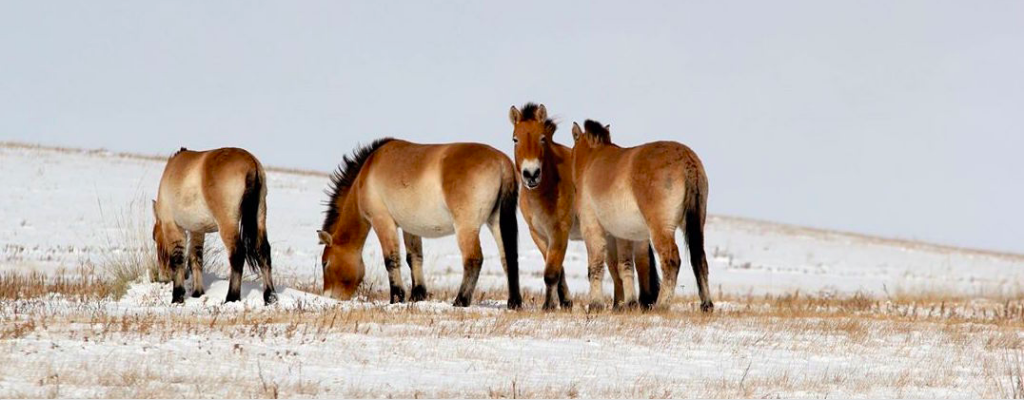
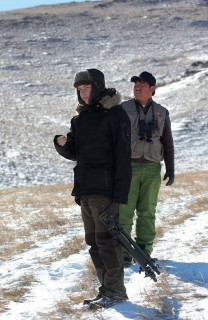
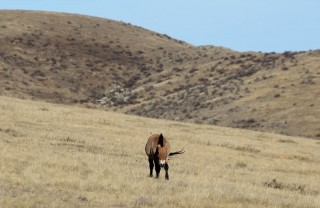
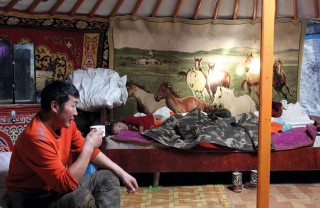
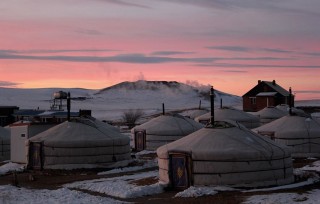
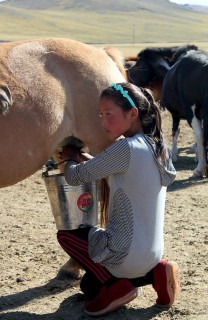
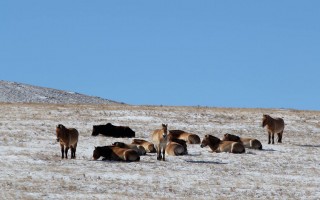
Comments